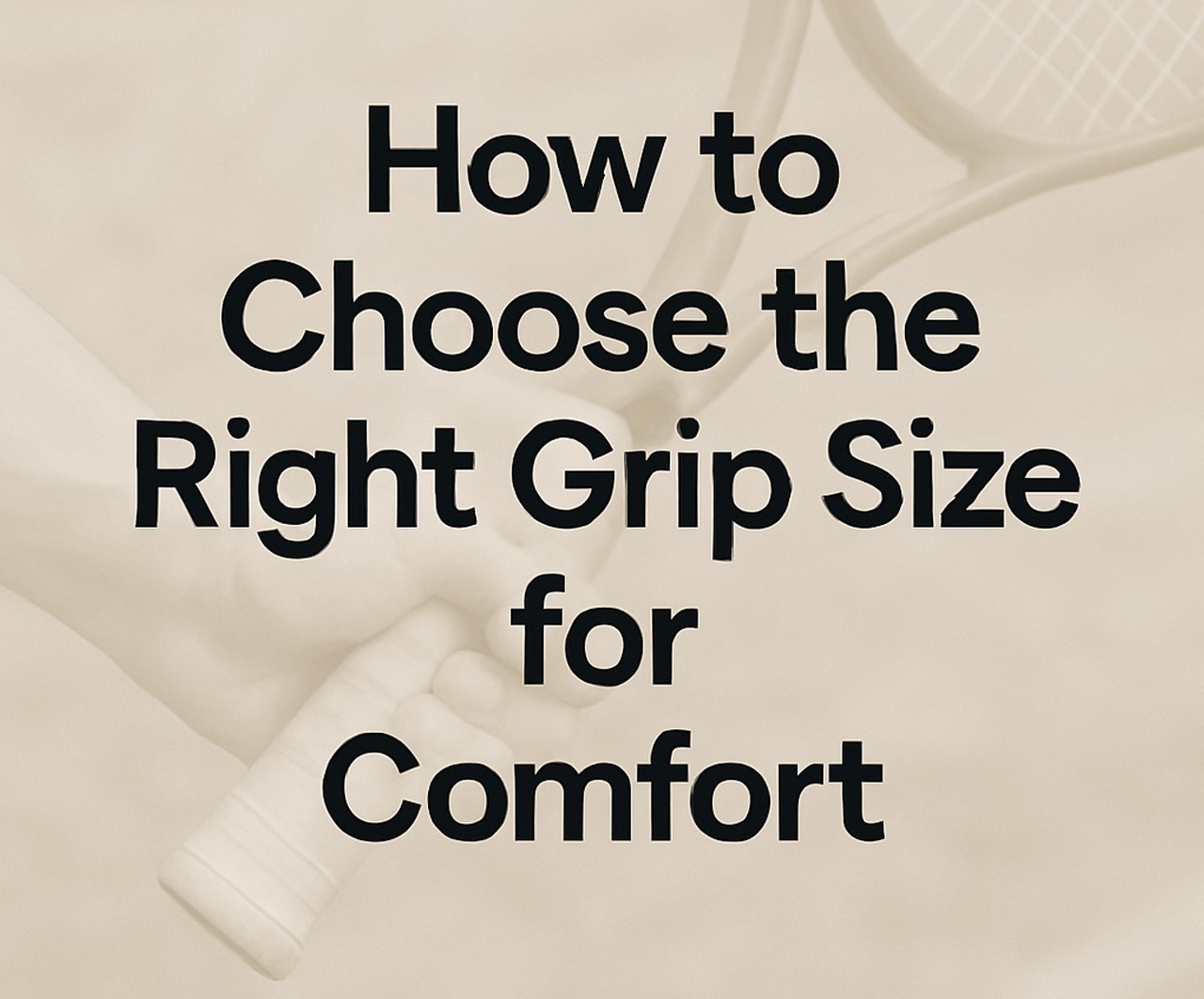Choosing the right pickleball paddle grip size is one of the most important factors for improving your game and ensuring comfort on the court. A grip that’s too small can cause your hand to overwork, leading to fatigue and injuries, while a grip that’s too large can reduce control and make it harder to maneuver the paddle effectively. Whether you’re a beginner or an experienced player, understanding how to measure pickleball right grip size and selecting the best pickleball paddle size can make all the difference in your performance and overall playing experience.
In this guide, we’ll cover everything you need to know about grip sizes, including why they matter, how to measure them, and tips for finding the perfect fit. Know more..
Why Right Grip Size Matters in Pickleball
The grip size of your pickleball paddle directly impacts your performance, comfort, and risk of injury. Here’s why choosing the right grip size is so important:
1. Control and Maneuverability
A properly sized pickleball paddle grip size allows for better paddle control. If the grip is too large, it becomes difficult to rotate the paddle, affecting your shot precision and responsiveness. A smaller grip size, on the other hand, allows for more wrist action, which is beneficial for spin shots and quick adjustments. However, if it’s too small, it can lead to overuse of your wrist, increasing the risk of strain injuries.
2. Comfort and Reduced Fatigue
A grip that fits your hand well reduces strain on your wrist and forearm. Over time, using the wrong grip size can lead to discomfort, soreness, and even long-term injuries. A properly sized grip reduces fatigue and allows for longer play sessions without discomfort, especially in high-intensity matches.
3. Injury Prevention
Using a grip that’s too large forces your hand and fingers to overextend, which can lead to conditions like tennis elbow and wrist strain. On the other hand, a grip that’s too small forces your hand to overgrip the paddle, creating unnecessary tension in your muscles. This tension can lead to overuse injuries, which are common in pickleball players who don’t pay attention to their grip size.
By understanding how to measure pickleball right grip size, you can minimize these risks and maximize your playing potential.
How to Measure Your Pickleball Right Grip Size
There are two primary methods for measuring your ideal pickleball paddle right grip size:
1. The Finger Measurement Method
This method provides a precise way to determine your grip size using your own hand.
Steps:
- Open your dominant hand with your fingers extended.
- Measure from the tip of your ring finger to the middle crease of your palm.
- This measurement (in inches) represents your ideal grip size.
For example:
- If the measurement is 4 inches, you should choose a paddle with a 4-inch grip size.
- If the measurement is 4.25 inches, a 4.25-inch grip size would be ideal.
This method is considered the most accurate because it’s based on your individual hand size rather than a general guideline.
2. The Height-Based Method
Your height can also help determine the appropriate pickleball paddle grip size:
- Under 5’2″ → 4-inch grip
- 5’3″ to 5’8″ → 4.25-inch grip
- Above 5’9″ → 4.5-inch grip
While this method gives a general estimate, it’s always best to test paddles in person or use the finger measurement method for a more accurate result. A paddle that feels comfortable in your hand will allow you to maintain better control and consistency during gameplay.
How to Adjust Grip Size for a Custom Fit
Sometimes, you may find a great paddle, but the grip size isn’t quite right. Fortunately, there are ways to modify it:
Increasing Grip Size
If the grip is too small, you can build it up using an overgrip. Overgrips are thin, cushioned layers that wrap around the handle, increasing the size slightly while improving comfort.
- Each layer of overgrip adds about 1/16 of an inch.
- You can add multiple layers to achieve the perfect fit.
- Overgrips also improve moisture absorption, preventing the paddle from slipping during intense play.
Decreasing Grip Size
Reducing grip size is more difficult since the factory grip is designed for a specific circumference. However, in some cases, replacing the existing grip with a thinner overgrip can help slightly reduce the size.
For best results, start with a smaller grip and build it up as needed. A smaller grip gives you the flexibility to increase size incrementally, ensuring a customized fit.
What Happens If You Choose the Wrong Grip Size?
Choosing the wrong pickleball paddle grip size can have negative effects on your game:
- Grip Too Small: Leads to excessive wrist action, reduced control, and increased risk of strain injuries. Smaller grips require more strength to maintain control, which can result in fatigue during longer matches.
- Grip Too Large: Reduces wrist movement, making it harder to generate spin and power. It can also lead to hand fatigue and discomfort over time. Large grips limit wrist flexibility, reducing your ability to make quick adjustments.
That’s why it’s crucial to know how to measure pickleball before investing in a new paddle.
Finding the Best Pickleball Paddle for Grip Size
Once you’ve determined your ideal grip size, it’s time to find the best pickleball paddle that fits your playing style.
Key Factors to Consider:
- Grip Circumference – Ensure that the paddle’s grip matches your measurement for maximum comfort and control.
- Grip Material – Look for a grip material that provides a comfortable, non-slip feel. Cushioned grips absorb moisture and reduce hand fatigue, which is especially important in hot and humid conditions.
- Absorption & Cushioning – A well-cushioned grip absorbs sweat and impact, making play more comfortable.
- Paddle Weight – Lighter paddles are easier to maneuver, while heavier paddles offer more power. However, a heavy paddle combined with an incorrect grip size can lead to increased strain on your wrist and arm.
Tips for Testing and Trying Different Paddles
When searching for the best pickleball paddle for grip size, it’s a good idea to test different paddles to see what feels most comfortable in your hand. Here’s how:
- Test with Different Grip Sizes: Try paddles to get a feel for what’s most comfortable.
- Focus on Comfort and Control: Pay attention to how well you can control the paddle during swings. A properly sized grip will feel secure and balanced.
- Check for Fatigue: Play a few points with different paddles and notice whether your hand feels fatigued or strained.
Testing different paddles can help you make an informed decision and ensure that you choose a paddle that enhances your game.
Common Mistakes When Choosing Grip Size
Even experienced players sometimes make mistakes when selecting a grip size. Avoid these common errors:
- Ignoring Proper Measurement: Don’t rely solely on height to determine grip size. Use the finger measurement method for accuracy.
- Choosing Based on Aesthetics: A stylish paddle is great, but if the grip size isn’t right, it can negatively impact your performance.
- Forgetting to Test the Paddle: Always try out a paddle before purchasing, if possible. Testing ensures that the grip size feels comfortable in real-game scenarios.
FAQs About Pickleball Grip Sizes
Q: Can I use a tennis grip size chart for pickleball paddles?
A: While similar, pickleball paddles have slightly different handle shapes and sizes compared to tennis rackets. It’s best to use a pickleball-specific measurement guide.
Q: What’s better, a smaller or larger grip size?
A: If you’re unsure, it’s better to go with a smaller grip size and use overgrips to adjust. A grip that’s too large is harder to modify.
Q: How often should I replace my grip?
A: If you play regularly, replace your grip every 3 to 6 months to maintain a firm, non-slip feel. Over time, grips lose their tackiness and cushioning, affecting your control.
Conclusion
Choosing the right pickleball paddle grip size is essential for improving your comfort, control, and overall performance on the court. By understanding how to measure pickleball you can ensure that your paddle fits your hand perfectly, reducing the risk of fatigue and injuries.
Remember, if you’re unsure, start with a smaller grip and adjust with overgrips. Whether you’re a beginner or a seasoned player, selecting the best pickleball paddle for grip size will enhance your game and make every match more enjoyable.
Ready to find your perfect paddle? Measure your grip size today and experience the difference the right fit can make!

